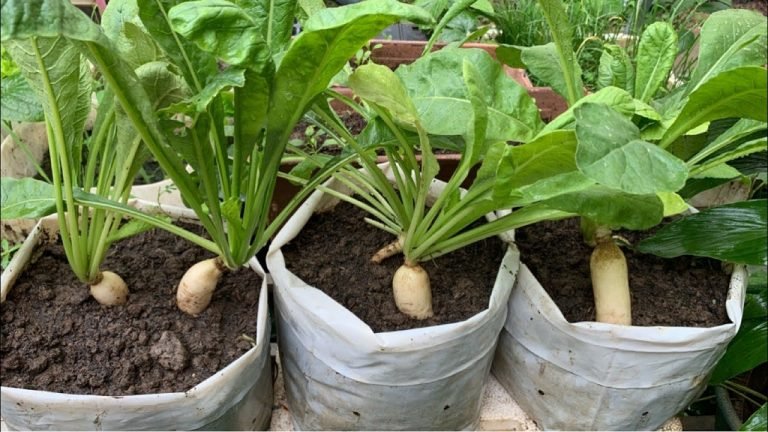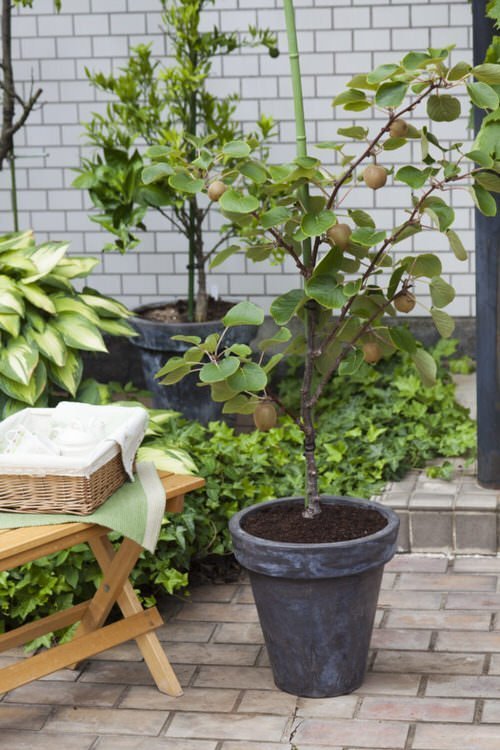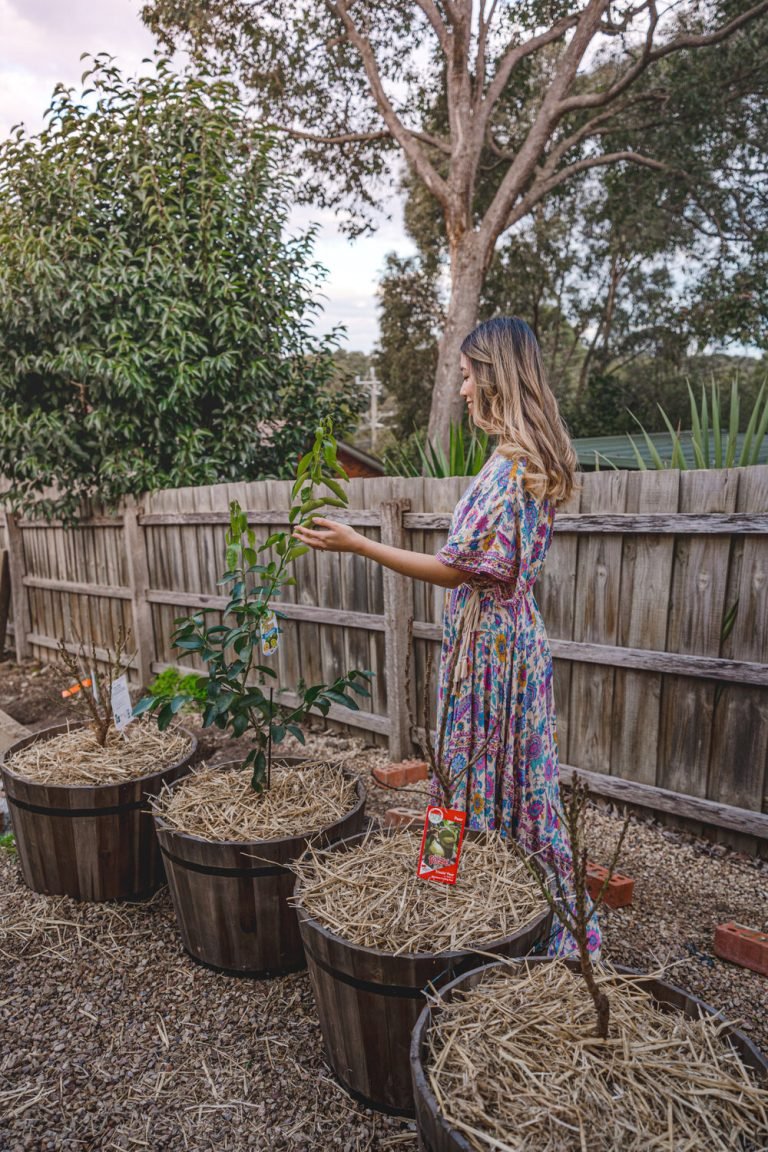how to grow vine tomatoes in a pot – [Beginners Guide]
Tomato vines are an essential ingredient in many households. They are a staple in many dishes and are packed with flavors. Growing them in pots at home can bring joy, excitement, and a fresh supply of ripe tomatoes right at your fingertips!
As a home gardener myself, I have learned that growing tomatoes in pots is an easy, low-maintenance, and affordable way to get fresh produce. Pots are a great option for those who have limited space, live in apartments, or those who want to grow tomatoes in a controlled environment.
In this guide, I’ll share with you how to grow vine tomatoes in a pot, from choosing the right pot to tips for watering and harvesting. By the end of this article, you will have all the information you need to successfully grow vine tomatoes in a pot and enjoy their delicious flavors all season long!
Pot or container selection
Choosing the right pot is essential for growing vine tomatoes successfully. The size and construction of the pot are critical factors for the optimal growth of the tomatoes.
A pot with a minimum capacity of 20 quarts is recommended for growing vine tomatoes. This will allow enough room for the plant’s roots to grow and spread, promoting healthy growth. If you’re planting multiple vine tomatoes, you will need a larger pot to accommodate the plants’ growth.
The pot should be made of a porous material such as terra cotta, which allows air to circulate and prevents water from getting trapped in the soil. This will help to prevent root rot and other diseases that can harm the plant. Additionally, the pot should have good drainage holes at the bottom to allow excess water to drain out and prevent waterlogging.
In summary, when choosing a pot for growing vine tomatoes, look for one with a minimum capacity of 20 quarts, made of a porous material with good drainage, and large enough to accommodate the plants’ growth.
Make suitable soil mix
The soil mix is a crucial factor in growing vine tomatoes successfully. The correct soil composition is essential for providing the plants with the necessary nutrients and moisture for optimal growth.
A well-draining soil mix that is rich in organic matter is recommended for growing vine tomatoes. A good soil mix for tomatoes can be made by combining equal parts of garden soil, compost, and peat moss. This mix will provide the necessary nutrients, moisture-retaining ability, and good drainage for the plant.
It’s also important to check the pH of the soil before planting. Tomatoes prefer a slightly acidic soil with a pH range of 6.0 to 6.8. If the pH is too high or too low, you can adjust it by adding sulfur or lime to the soil mix accordingly.
In summary, when selecting a soil mix for growing vine tomatoes, look for a well-draining mix that is rich in organic matter, with a pH range of 6.0 to 6.8. A soil mix made of equal parts of garden soil, compost, and peat moss is a good starting point.
How to plant the vine tomatoes?
Planting vine tomatoes in a pot at home is a simple and straightforward process. Follow these easy steps to get started:
- Choose a suitable pot: Select a pot with a minimum capacity of 20 quarts, made of a porous material, with good drainage and large enough to accommodate the plants’ growth.
- Prepare the soil mix: Mix equal parts of garden soil, compost, and peat moss to make a well-draining soil mix that is rich in organic matter. Check the pH of the soil and adjust it to a range of 6.0 to 6.8 if necessary.
- Plant the tomatoes: Fill the pot with the soil mix, leaving about 2 inches of space at the top. Make a hole in the soil big enough to fit the tomato plant and gently remove it from its container. Place the plant in the hole, ensuring that the root ball is fully covered by soil. Fill the remaining space with soil and gently press it down to remove any air pockets.
- Water the plant: Water the plant immediately after planting to settle the soil around the roots. Continue to water the plant regularly, ensuring the soil remains moist but not waterlogged.
- Provide support: As the plant grows, provide support such as a trellis or stake to help keep it upright. This will also prevent the branches from breaking as the plant becomes heavy with fruit.
In summary, growing vine tomatoes in a pot at home is a simple process that requires a suitable pot, a well-draining soil mix, planting the tomatoes, watering the plant, and providing support as it grows.
How to care for vine tomatoes?
Watering Requirement
Vine tomatoes require consistent moisture to grow and produce fruit. It’s important to water the plants regularly, but avoid waterlogging, as this can cause root rot. Here are some tips for watering vine tomatoes:
- Frequency: Water the plants deeply and thoroughly about once a week, or as needed to keep the soil consistently moist.
- Amount: The amount of water needed will depend on factors such as the size of the pot, the temperature, and the humidity. A good rule of thumb is to water until the soil is evenly moist, but not waterlogged.
- Method: It’s best to water the plants at the base, avoiding getting the leaves wet, as this can encourage the growth of fungal diseases.
Fertilizer Requirement
Vine tomatoes benefit from regular feeding to ensure they have all the nutrients they need for optimal growth and fruit production. Here are some tips for fertilizing vine tomatoes:
- Type: Use a balanced fertilizer specifically formulated for tomatoes, such as 10-10-10.
- Timing: Apply fertilizer every 4 to 6 weeks, starting when the plants have 2 to 3 sets of leaves, and continuing until the end of the growing season.
- Amount: Follow the manufacturer’s instructions for the correct amount of fertilizer to use. Over-fertilizing can damage the plants, so it’s important to use the recommended amount.
Sunlight Needs
Vine tomatoes require full sun to grow and produce fruit. Here are some tips for providing adequate sunlight for vine tomatoes:
- Location: Choose a location that receives at least 6 to 8 hours of direct sunlight every day.
- Shade: Avoid planting the tomatoes in a location that is shaded by other plants or structures, as this will reduce the amount of sunlight they receive.
Pruning & Training
Pruning and training vine tomatoes can help encourage healthy growth and increase fruit production. Here are some tips for pruning and training vine tomatoes:
- Pruning: Prune off any leaves that are yellowing or diseased to help prevent the spread of problems to the rest of the plant.
- Training: Train the plants to grow along a trellis or stake, removing any side shoots that develop along the stem to encourage the plant to focus its energy on growing taller.
Other Care
In addition to watering, fertilizing, providing adequate sunlight, and pruning and training, here are a few other tips for caring for vine tomatoes:
Common problems
Pests and Insects
Tomatoes grown in pots can be susceptible to various pests and insects such as aphids, tomato fruit worms, and whiteflies. These pests can damage the plant’s foliage, stems, and fruit, reducing growth and yield. To control pests, you can use organic methods such as neem oil or insecticidal soap, or chemical methods such as pyrethrin-based insecticides. It’s important to follow the label instructions carefully when using any type of pesticide to avoid harm to the plants.
Diseases
Vine tomatoes can also be prone to various diseases, including early and late blight, verticillium wilt, and fusarium wilt. Proper care, such as avoiding overcrowding and allowing for good air circulation, can help prevent these diseases. If a plant is affected, it’s best to remove it promptly to prevent the spread of the disease to other plants.
Poor Production
Poor production can be caused by a number of factors, including lack of sunlight, incorrect soil pH, over or under watering, and fertilizer imbalances. Monitoring the plant’s growth and addressing any issues promptly can help improve production.
Other Issues
Tomatoes grown in pots can also face other issues, such as cracking and splitting of the fruit. This can be caused by sudden changes in moisture levels, and can be prevented by maintaining consistent watering.
Harvesting & storing homegrown vine tomatoes
When to Harvest
Vine tomatoes are ready for harvest when they are fully ripe and have a deep red color. To test for ripeness, gently squeeze the fruit. If it gives slightly, it’s ready to be picked. The time from planting to harvest can vary from 50 to 80 days, depending on the variety of tomato and growing conditions.
Harvesting Method
When harvesting vine tomatoes, use sharp scissors or pruning shears to cut the stem just above the fruit. Try to avoid pulling on the fruit as this can damage the plant. It’s best to harvest tomatoes in the morning when they are cooler and firmer.
Storing Homegrown Tomatoes
Tomatoes can be stored at room temperature for up to a week. To extend their shelf life, store them in a cool, dry place out of direct sunlight. Tomatoes can also be stored in the refrigerator, but the texture and flavor may be affected. To prevent bruising, place the tomatoes stem-side up and avoid stacking them on top of each other.
When to Store
It’s best to store tomatoes when they are fully ripe, but still firm. Overripe tomatoes should be eaten or used immediately, as they will not store well. If you have a large harvest and can’t use or eat the tomatoes right away, consider preserving them by canning, freezing, or making tomato sauce or salsa.
Growing vine tomatoes in container – Conclusion
Conclusion
Growing vine tomatoes in pots is a great way to enjoy fresh, delicious tomatoes right in your own backyard. With the right pot, soil mix, and care, you can have a thriving tomato plant that produces abundant fruit. Whether you’re a seasoned gardener or just starting out, growing vine tomatoes in pots is a fun and rewarding project.
Some key takeaways to remember:
- Use a pot with good drainage and at least a 15-gallon capacity
- Use a well-draining soil mix with added compost
- Water regularly, keeping the soil consistently moist but not waterlogged
- Provide plenty of sunlight, at least 6 hours a day
- Prune and train the plant to promote healthy growth and fruit production
- Be on the lookout for common problems such as pests, disease, and poor production
- Harvest and store fully ripe tomatoes when they are firm and deep red in color
With a little bit of effort and attention, you can enjoy the taste of fresh, juicy vine tomatoes straight from your own garden. So why not give it a try and see how rewarding and satisfying it can be!








